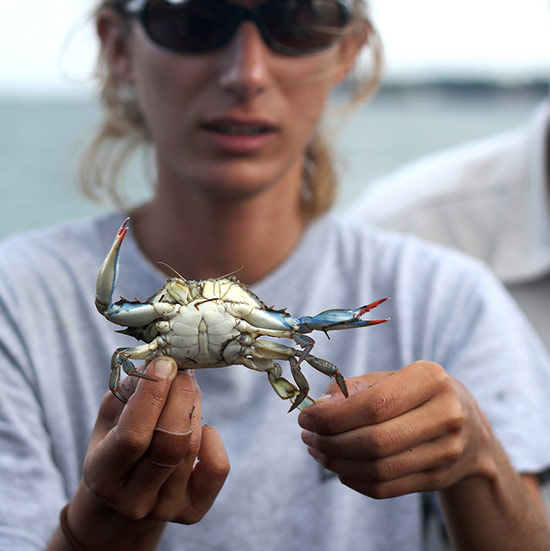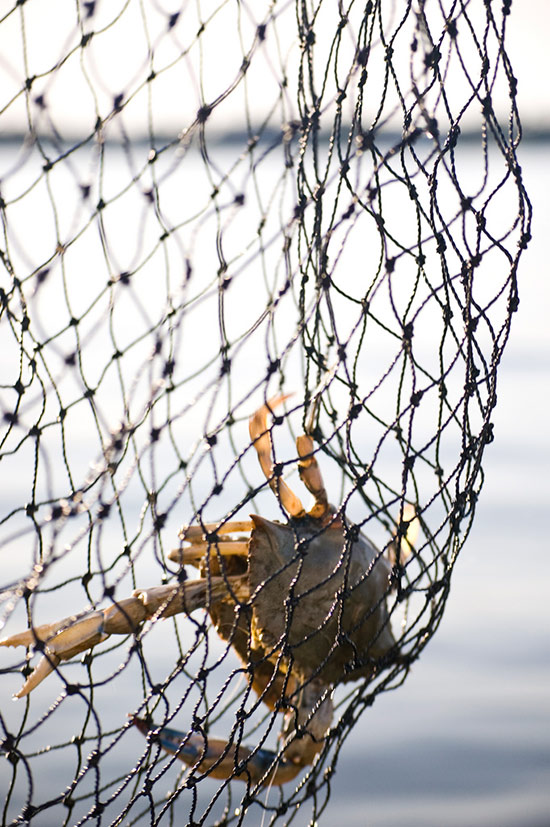Chesapeake Bay’s blue crab abundance remains low
The long, cold winter killed an estimated 28 percent of adult crabs in Maryland waters.
The blue crab population in the Chesapeake Bay has dropped, due to a range of factors that include weather patterns, coastal currents and natural predators.

According to scientists with the Maryland Department of Natural Resources (DNR), the long, cold winter and resulting low water temperatures killed an estimated 28 percent of adult crabs in state waters. This marks one of the worst “cold-kill” events since the state started tracking blue crab populations in 1990.
Both Maryland and Virginia measure the Bay’s blue crab population by conducting an annual winter dredge survey. Over the course of three and a half months, scientists visit 1,500 sites around the Bay, using metal dredges to pull up the crabs that are over-wintering in the mud.

Results of the most recent winter dredge survey show that the Bay’s total blue crab population fell from 300 million to 297 million between 2012 and 2013; the number of spawning-age females fell from 147 million to 69 million, passing the minimum threshold that managers adopted in 2011. The Chesapeake Bay Program tracks this latter number as an indicator of Bay health, and a decline could be a factor in determining blue crab management methods.
Indeed, Maryland, Virginia and the Potomac River Fisheries Commission (PRFC) have committed to collaborating on a two-pronged management approach to conserve adult female crabs: first, the groups will work to protect adult females that will be spawning this summer. Second, the groups will work to protect the current population of juvenile females through next spring, in order to build up the population of females that will spawn next year.
“Even though our 2008 conservation measures were designed to allow for naturally occurring fluctuations in crabs, these results are not what we had hoped to see,” said DNR Fisheries Director Tom O’Connell in a media release. “What is most important here is that the structure we put into place to cooperatively manage this fishery is strong, and that we continue to work with our partners and stakeholders to initiate a new stock assessment that could help evaluate our current management framework.”
The Chesapeake Bay Stock Assessment Committee (CBSAC) is expected to release their 2014 Blue Crab Advisory Report this summer.

Comments
I hope all blue crabs live
Thank you!
Your comment has been received. Before it can be published, the comment will be reviewed by our team to ensure it adheres with our rules of engagement.
Back to recent stories